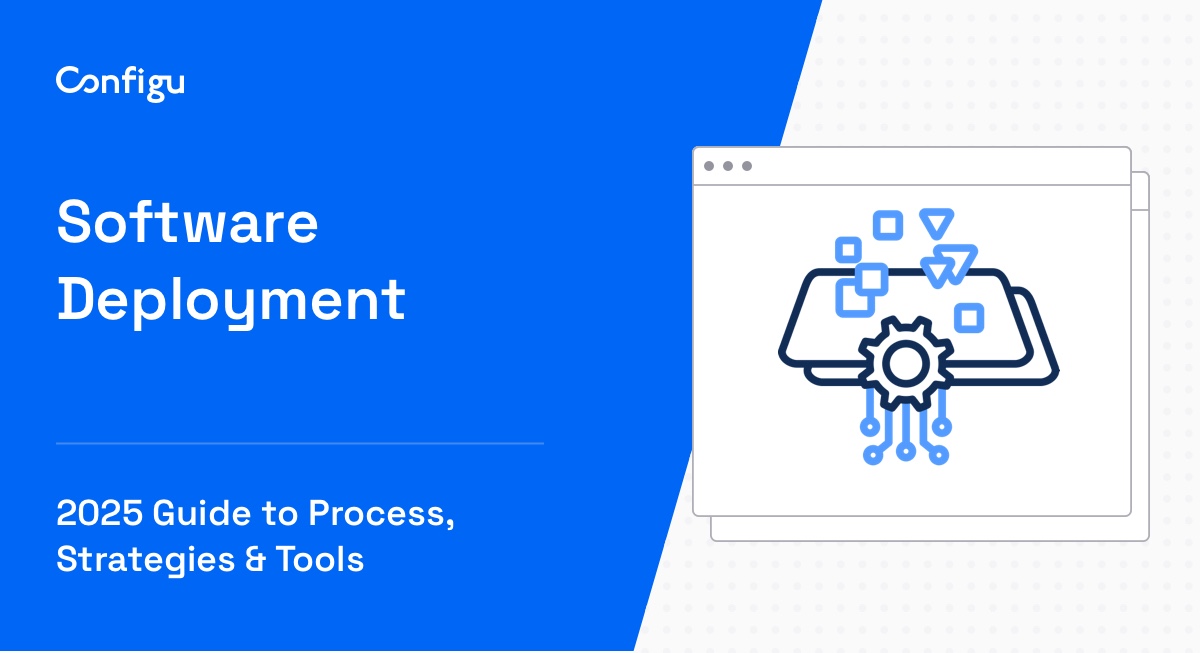What Is DevOps?
DevOps unifies software development (Dev) and information technology operations (Ops) to shorten the systems development life cycle while delivering features, fixes, and updates frequently. Originating from a need to improve the development process, DevOps emphasizes collaboration between developers and operations teams.
This approach automates processes and fosters a culture of continuous integration and continuous delivery (CI/CD). DevOps focuses on automating repetitive tasks, improving deployment speeds, and maintaining service reliability. It leverages tools for managing configurations, monitoring system performance, and rapidly identifying bugs.
Although DevOps is technically driven, it significantly influences organizational culture by promoting mutual accountability and shared objectives among all parties involved in software development.
What Is Site Reliability Engineering?
Site reliability engineering (SRE) is a discipline developed by Google to balance system reliability and the rapid pace of software development. This approach bridges the gap between development and operations by using software engineering principles to manage infrastructure and operations.
SRE focuses on creating scalable and reliable software systems, utilizing metrics like service level objectives (SLOs) and service level agreements (SLAs) to keep services performant.
The SRE model relies on automation, emphasizing efficiency in handling mundane operational tasks, allowing engineers to focus on system improvements. It allows organizations to manage complex infrastructures with minimal human intervention, improving site reliability and reducing failures.
In this article:
DevOps vs. SRE: Key Differences
Here’s an overview of the main differences between these two approaches.
1. Origins and Evolution
DevOps emerged as a response to growing inefficiencies in the traditional software delivery pipeline. In conventional setups, developers and operations teams worked in silos, leading to delays, miscommunication, and a lack of accountability for production issues. As agile development gained popularity, it became clear that integrating operations into the agile workflow was necessary. DevOps gained momentum through practitioner-led initiatives, conferences (like DevOpsDays), and toolchain innovations that supported continuous delivery.
SRE was introduced by Google as a formal job role in the early 2000s. It was conceived as a way to apply software engineering practices to infrastructure and operations. Google needed a scalable, engineering-based approach to run massive distributed systems reliably. SRE evolved through internal experimentation and was later documented publicly, making it accessible to other organizations. Unlike the grassroots nature of DevOps, SRE started as an organizationally structured practice with detailed documentation and a clearly defined mandate.
2. Core Principles
DevOps is rooted in continuous improvement, automation, fast feedback, and close collaboration between development and operations. It promotes a cultural shift where everyone is accountable for the performance and reliability of applications in production. Key practices include CI/CD, version-controlled infrastructure, and real-time monitoring. DevOps encourages teams to fail fast, recover quickly, and iterate continuously to improve delivery outcomes.
SRE principles revolve around designing for reliability from the ground up. It introduces concepts like error budgets, which allow teams to balance innovation with stability. SRE treats operations problems as software problems, encouraging the use of code to automate processes and reduce human error. It prioritizes removing toil—any manual work tied to running services—and fosters a blameless culture around incidents to focus on systemic improvements.
3. Roles and Responsibilities
DevOps does not prescribe specific roles but promotes shared responsibilities. Developers are expected to understand how their code behaves in production, while operations professionals contribute to automating deployments and improving observability. The goal is to dissolve boundaries so that teams own their services end-to-end—from writing the code to monitoring its performance in production.
SRE introduces a distinct role with specific responsibilities. Site reliability engineers are tasked with ensuring that systems are scalable, reliable, and performant. They are responsible for defining and enforcing SLOs, managing incident response, conducting postmortems, and implementing automation to reduce operational overhead. SREs often work alongside product development teams but maintain a degree of independence to prioritize reliability concerns over feature velocity when needed.
4. Focus and Objectives
DevOps focuses on speed and efficiency in delivering software. Its main objective is to reduce the time it takes to move code from development to production without compromising quality. It emphasizes rapid iteration, faster feedback loops, and continuous improvement. Success in DevOps is typically measured by how quickly and safely new features and fixes can be delivered.
SRE prioritizes reliability, availability, and scalability. Its main objective is to keep systems within defined reliability thresholds, using quantitative goals like SLOs to guide decisions. SRE accepts that some risk and failure are inevitable and uses error budgets to determine how much risk is acceptable. This ensures that velocity does not come at the expense of system stability.
5. Approach to Automation and Tooling
DevOps promotes automation to eliminate manual handoffs and reduce errors in the delivery process. Tools are chosen based on the needs of the team and often include CI/CD pipelines (e.g., Jenkins, GitLab CI), infrastructure as code platforms (e.g., Terraform, Ansible), and monitoring solutions (e.g., Prometheus, Grafana). The emphasis is on integrating tools into a cohesive pipeline that supports rapid development and delivery.
SRE views automation as critical for operational scalability and reliability. Automation is not just about deployment—it includes failure recovery, scaling, alerting, and diagnostics. SRE teams build or customize tools to fit the needs of their systems, often creating sophisticated solutions to address complex operational challenges. Reducing toil is a core goal, so any repetitive, manual process is a candidate for automation.
6. Variations in Metrics
DevOps relies on software delivery performance metrics to evaluate team efficiency and system health. Common metrics include deployment frequency (how often code is deployed), lead time for changes (how quickly changes go from commit to production), mean time to recovery (MTTR), and change failure rate (percentage of changes that cause incidents).
SRE uses a more structured framework based on SLIs, SLOs, and SLAs. SLIs are measurements (e.g., request latency, error rates), while SLOs are targets for those metrics (e.g., 99.9% success rate). SLAs are formal agreements based on SLOs and often carry business consequences.
Tips From the Expert
In my experience, here are tips that can help you better navigate the nuances between SRE and DevOps and implement them effectively in real-world environments:
- Designate error budget policies per service tier: Instead of applying a uniform error budget across all services, categorize services by criticality (e.g., user-facing, internal, batch processing) and assign tiered error budget policies. This helps prioritize engineering effort and manage risk more granularly.
- Integrate feature flags with SLO enforcement: Tie feature flags to error budget consumption. If a new feature depletes the error budget rapidly, automated systems can roll it back or degrade gracefully without human intervention—bridging DevOps agility and SRE reliability.
- Define SLOs collaboratively with product teams: Don’t let SREs or engineers define SLOs in isolation. Bring in product owners and business stakeholders early to align reliability metrics with customer expectations and business impact, making trade-offs more informed and strategic.
- Use observability debt as a DevOps-to-SRE transition signal: When teams start struggling to understand production behavior despite having monitoring in place, it’s a sign observability debt is high. This often signals the need to evolve from DevOps-style metrics to structured SRE observability (SLIs/SLOs).
- Adopt ‘reliability as code’ practices: Extend infrastructure-as-code to include reliability definitions—codify SLOs, alert thresholds, and error budget policies in version-controlled repositories. This aligns with SRE’s software-driven ops model and enforces discipline.
When to Choose SRE, DevOps, or Both
Choosing between DevOps, SRE, or a combination of both depends on the organization’s size, complexity, and maturity. DevOps is often a good starting point for organizations seeking to improve collaboration and speed up deployments. It works well in environments where agility and responsiveness are priorities, and where operational responsibilities can be distributed across development teams.
SRE is typically more suitable for organizations with large-scale, complex systems that require rigorous reliability engineering. If services are mission-critical or operate under strict uptime requirements, SRE provides the discipline and structure to enforce reliability goals. Companies with mature infrastructure and dedicated teams can benefit from SRE’s use of SLOs, error budgets, and formalized incident management.
A Hybrid Approach
In many cases, organizations use both approaches in tandem. DevOps can define the cultural foundation—promoting collaboration and continuous delivery—while SRE provides the engineering rigor and metrics needed to scale operations reliably. This hybrid model is particularly effective for organizations transitioning from fast-growing startups to operationally mature enterprises. It allows them to maintain velocity while gradually introducing practices to control risk and improve reliability.
The decision also depends on the team structure and available skill sets. DevOps tends to favor generalists—engineers comfortable with both development and operations—while SRE typically requires specialized roles with strong software engineering and systems knowledge. Introducing SRE without the right technical capacity can lead to process overhead without tangible benefits.
Another consideration is how much control teams have over infrastructure. In organizations with a high degree of automation and cloud-native practices, SRE may be more easily adopted since the infrastructure lends itself to observability and code-based operations. Teams with limited automation or legacy systems may benefit more from DevOps practices that incrementally improve deployment and collaboration.
Supporting SRE and DevOps with Configu
Modern engineering teams succeed when velocity and reliability rise together. Configu delivers the configuration-as-code backbone that lets DevOps teams ship faster and gives SREs the guard-rails they need to keep error budgets intact. By unifying every environment variable, secret, and feature flag in a single, version-controlled system, Configu removes the silent misconfigurations that still cause 70 % of production incidents — freeing engineers to focus on innovation instead of firefighting.
How Configu powers DevOps performance
- Configuration-as-Code inside your pipeline – All app settings live in Git right next to application code, enabling atomic pull-requests, code-review, and rollbacks that improve DORA metrics like Change Failure Rate and Lead Time for Change.
- First-class CI/CD integrations – Inject validated configs into GitHub Actions, Jenkins, Argo CD, or any pipeline without rewriting jobs, pushing deployment frequency up while keeping MTTR down.
- Drift-free promotions – Configu’s environment-aware orchestration automatically promotes approved values from dev → staging → prod, eliminating the “works-in-test, breaks-in-prod” trap that slows down releases.
How Configu reinforces SRE reliability goals
- Error-budget-safe rollouts – Because every change is typed, validated, and logged, teams can halt rollouts the moment SLOs wobble and roll back instantly, protecting error budgets described in Google’s SRE handbook.
- Toil elimination through automation – Routine config edits, secret rotations, and feature-flag toggles are handled by bots, keeping repetitive toil well below the 50 % ceiling recommended for SREs.
- Schema validation & policy gates – Mis-typed variables are blocked in CI rather than discovered in incident post-mortems, reducing the change-failure rate toward the 0 – 15 % elite benchmark.
Unified capabilities for shared success
| Configu capability | DevOps value | SRE value |
|---|---|---|
| Single source of truth | Faster reviews & merges | Reliable rollback & audit trails |
| Dynamic secret & flag management | Seamless blue/green & canary toggles | Rapid mitigation without redeploys |
| Role-based access & immutable logs | Safe self-service for developers | Compliance evidence for SLAs/SLOs |
Bottom line: Configu lets DevOps move fast and gives SREs the confidence that every push respects reliability targets. Start a free trial or explore the open-source orchestrator on GitHub to see how configuration-as-code can unify your engineering goals today.



